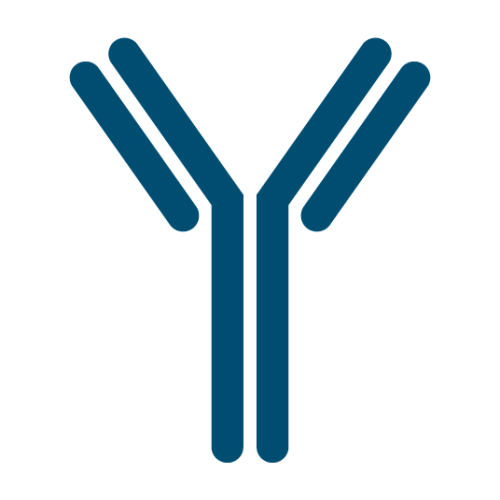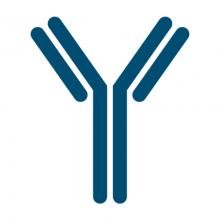
Anti-RSV F Glycoprotein [4-15]
| Cat# | 151854 |
| Applications | ELISA, IHC, IF, WB |
| Antigen/Gene or Protein Targets | Respiratory Syncytial (RS) virus Fusion glycoprotein |
| Reactivity | Virus |
| Relevance | Human Respiratory Syncytial Virus (RSV) is a major cause of lower respiratory tract illness and is the chief cause of hospitalization for respiratory tract illness in young children.The glycoprotein F is located on the surface of viral envelope, its function is to induce fusion of viral envelope with host-cell envelope resulting in syncytium formation. The glycoprotein F (also named VP70, F0 or fusion protein) consists of two components: F1 (also named VPG48) and F2 (also named VGP26) held together by disulphide bonds. The reported molecular weight of the VGP26 component varies between 20 to 26 kDa. On the basis of the reactivity of this antibody and the antibodies: clone 4-14 (cat number: 151851) and clone 3-5-18 (cat number: 151850), the existence of two antigenic types of human RS virus was identified, Gimenez et al. (1986). |
| Host | Mouse |
| Immunogen | The immunogen was gradient purified and UV inactivated RSN2 virus (subgroup B). The procedure used to produce this antibody is described in Gimenez et al. (1984). |
| Positive Control |
Validation of the monoclonal antibodies by immunoblotting: purified extracellular RSV was used as the antigen in two adjacent lanes and the virus proteins resolved by gel electrophoresis. The proteins were transferred to membrane. The proteins for one lane were incubated with the MAb to be validated and the other lane incubated with either convalescent human sera (HuS), containing antibodies to all the RSV proteins, or RSV antiserum raised in mice. Human sera containing antibodies to the RSV proteins were characterised by immunoblot using purified RS virus (PMDI 3572364). The second antibodies used were: goat anti-human immunoglobulin (lane: HuS) and goat anti mouse immunoglobulin (lane: Mab). The identity and molecular weights of the RSV proteins (VP) were well documented by the time the validation was done and are indicated in the figure. The methods used provided not only the identity of the virus protein reacting with the MAb but also its molecular weight. The validation of this MAbs is described in PMID 3517224. Validation of the monoclonal antibodies by indirect immunofluorescence: for the detection of surface antigen the cells were stained directly without fixation. Cells were fixed immediately before mounting on to microscope slides |
| Subclass | IgG1 |
| Molecular Weight (kDa) | The protein molecular weights were determined by co-electrophoresis with standard protein markers obtained from Sigma, their locations are marked on the figure. See also: “Positive control”. |
| Myeloma Used | P3X63Ag8.653 |
| Recommended Growing Conditions | Dulbecco’s media containing 20% Fetal Bovine serum (DH20) prepared as follows (for final volume of 300ml: 237ml DMEM plus 60 ml Fetal Bovine Serum plus 3ml L-Glutamine). |
| Strain | Balb/c |
| Notes | This antibody has neutralization activity of 400. This means that the antibody dilution of 1/400 gives an in vitro 50% reduction in virus titre (PMID 2732688). |
| Research Area | Virology |
| References |
Which Th pathway is involved during late stage amoebic gill disease? Europe PMC ID: 26166456 Antigenic variation between human respiratory syncytial virus isolates. Europe PMC ID: 3517224 |
For Research Use Only.
Boca Scientific is your premiere source for high-quality, innovative solutions for Cell Biology, Molecular Biology, Immunology, genetics and other lab products and reagents. We bring leading-edge products from our own-line and around the world to laboratories in the US and Canada. Our goal is to offer excellent solutions to drive research and discoveries backed by superior customer support.

